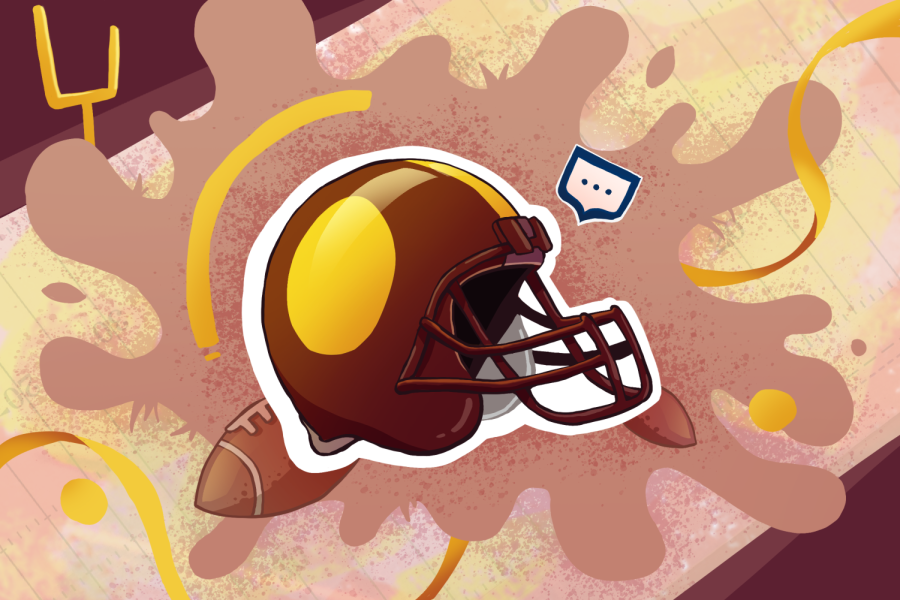Underneath the infographic: My experience with masked racism
September 14, 2021
This story was published in print during the 2020-21 school year.
I had just finished school, and was on FaceTime with a friend, chatting about a test we had taken earlier in the day. We both agreed that it hadn’t been our best performance and shared a laugh about how we were going to start the year off with failing grades.
“Your parents are going to kill you,” my classmate said. “Those towelheads probably won’t feed you for weeks.”
I faked a laugh and changed the subject, shrugging off his casual use of the word “towelhead,” a deragotory term referring to people of Middle Eastern or Indian descent. Suddenly, my mom walked in and cut our conversation short. She started to raise questions about what she had just heard over the phone. I tried my best to explain to her the mindlessness of the joke and how it was customary to share off-color quips amongst friends.
“It’s just how we talk,” I explained.
She raised an eyebrow at my response, and in a rare moment, reacted with genuine disappointment and sadness.
“Since when have you become so immune to such hurtful words?” she asked me. “We moved here for you to not have to hear things like that, not for you to become accustomed to it.”
As I checked my phone before going to sleep that night, I noticed that the same friend who made the comment had liked a post on Instagram about combating racism in schools. I barely slept that night, tossing and turning in my bed as memories of overlooked racist insults filled my head. I realized I had become so desensitized to being made fun of for my race that it now left me unfazed.
Even from my earliest memories of elementary school, I can still distinctly recall being verbally and physically harassed for having a different skin color than my classmates. From being the target of countless racist jokes, to nearly breaking my nose after a fellow first-grader shoved me to the ground for “looking wrong,” racism has been no stranger to me. I remember feeling as if it were my price to pay for being a child of immigrants in a foreign country. I felt like the prejudice I encountered was a tax I was not only asked to pay, but which I was required to accept, solely for being different.
My mother was right; I had let myself become immune and even accepting of the racism I regularly encountered. From that night on, I became increasingly aware of the microaggressions that permeated throughout most of my social interactions, especially from my classmates. The subtle remarks that went unnoticed by most of my friends began to weigh on me heavily.
While racist microagressions and spite-ridden comments plagued my day-to-day life, anti-racist infographics and socially conscious Instagram stories flooded my social media feed. I began to recognize a pattern: The people who posted online about ending systemic racism in America were some of the same peers who perpetuated interpersonal racism. The friend of mine whom my mom had overheard was part of a larger group of two-faced “slacktivists,” and it infuriated me. Underneath viral infographics, I’ve found reposters’ behavior to be nothing short of racist.
I began to question the integrity and true intentions of performative activism, which, to this day, dominates my social media feeds. In today’s socially distanced environment, a person’s social status is reliant on their online appearance. Based on my own experiences, I suspect that the reason so many students are making use of social media to spread anti-bias and “woke” content is to feel better about themselves, to go with the trend of the masses or a combination of both. The notion that someone can mask their prejudicial tendencies through effortless, sanctimonious advocacy is laughable, but it still deeply pains me. Underneath viral infographics, I’ve found reposters’ behavior to be nothing short of racist.
I was never courageous enough to speak up against performative activism, though. The fear of further alienating myself from those around me rendered me silent. My ethnicity had already separated me from the majority of my peers in so many aspects of my life. Everything from my home life, religion and culture had already set me apart from most of my friends and classmates. Calling people out for microaggressions, ones that most people wouldn’t think twice about — or even consider to be offensive — would just exacerbate that sense of solitude.
In light of the past summer’s national racial reckoning, high schoolers are becoming more aware of social issues that have plagued the lives of minorities in America for centuries. The distinction between performative activism and genuine allyship may be increasingly blurred, but one message should remain clear: Practice what you preach.
Our generation has the potential to put an end to the systemic and structural racism which have tainted American society for centuries and, until recently, went largely unaddressed. But such aspirations cannot be achieved unless we put in the time and effort to truly understand and confront the problem at hand — it has to go beyond absentminded posting.
Social media is a gift in its ability to spread awareness and information at the snap of a finger, but activism can’t begin and end online. An effort to treat everyone equally, with kindness and respect, regardless of their differences, is vital to creating a space where everyone feels not only welcomed, but wanted.






